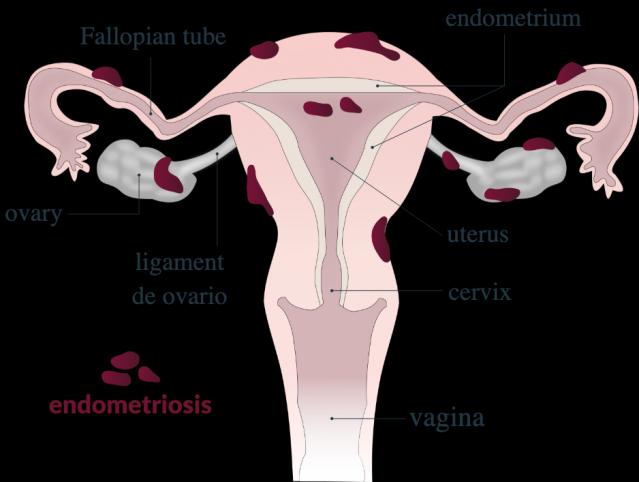What is Endometriosis?
Endometriosis is a chronic condition characterized by the presence of endometrial-like tissue growing outside the uterus. This tissue responds to hormonal changes during the menstrual cycle, leading to inflammation, scarring, and the formation of adhesions. While the exact cause is unknown, factors such as genetics, hormonal imbalances, and immune system dysfunction may contribute to its development.
Symptoms and Diagnosis
Symptoms of endometriosis vary widely but commonly include pelvic pain (often severe), especially during menstruation, intercourse, or bowel movements, as well as heavy menstrual bleeding and infertility. Diagnosis typically involves a thorough medical history, pelvic examination, and imaging studies such as ultrasound or MRI. However, definitive diagnosis often requires laparoscopic surgery to visualize and biopsy the abnormal tissue.
Treatment Options
Treatment for endometriosis aims to alleviate symptoms, prevent progression, and improve quality of life. Pain management strategies may include over-the-counter or prescription medications such as nonsteroidal anti-inflammatory drugs (NSAIDs) or opioids. Hormonal therapies, such as birth control pills, hormonal IUDs, or GnRH agonists, can help suppress the menstrual cycle and reduce symptoms. In cases where conservative measures fail, surgery to remove endometrial implants, scar tissue, or even the uterus (hysterectomy) may be recommended.
Impact on Fertility
Endometriosis can significantly impact fertility, although not all women with the condition experience infertility. The presence of endometrial tissue outside the uterus can lead to the formation of adhesions, scarring, and distortion of pelvic anatomy, potentially interfering with egg release, fertilization, or implantation. However, many women with endometriosis are still able to conceive naturally, while others may require fertility treatments such as in vitro fertilization (IVF) or assisted reproductive technologies (ART) to achieve pregnancy.
Living with Endometriosis
Living with endometriosis can be physically and emotionally challenging. Chronic pain, fatigue, and fertility concerns can significantly impact daily life and mental well-being. Support groups, counseling, and lifestyle modifications such as regular exercise, stress management, and a balanced diet may help manage symptoms and improve overall quality of life. Open communication with healthcare providers is essential for developing an individualized treatment plan and addressing any concerns or questions that arise along the way.
Conclusion:
Endometriosis is a complex and often misunderstood condition that affects millions of women worldwide. By raising awareness, promoting early diagnosis, and providing comprehensive treatment options, we can empower women to better manage their symptoms, preserve fertility, and lead fulfilling lives despite the challenges posed by this condition. Together, healthcare providers, researchers, and individuals affected by endometriosis can work towards improving understanding, advancing treatment modalities, and ultimately finding a cure.
This post first appeared on What Is In Vitro Fertilization (IVF), please read the originial post: here

